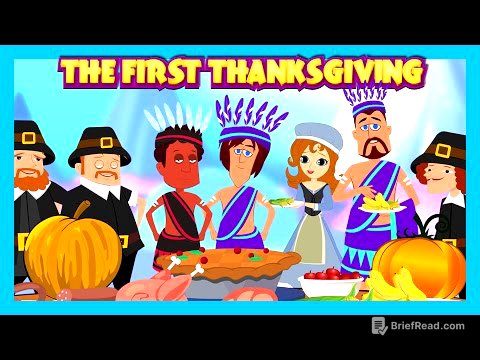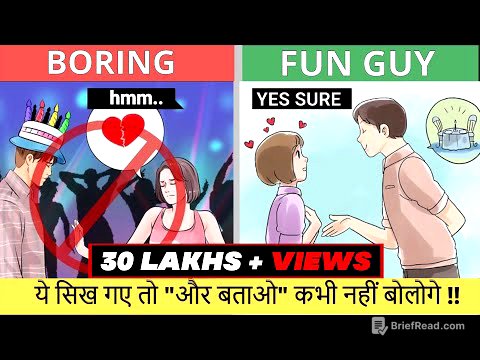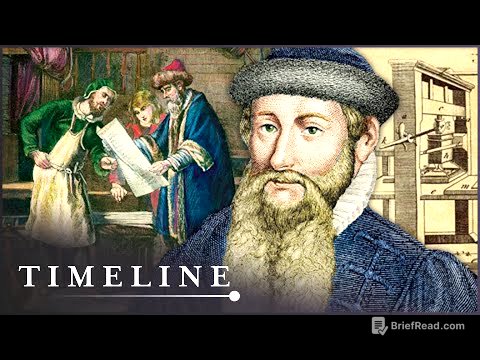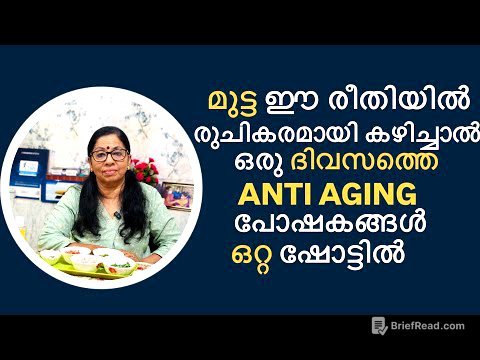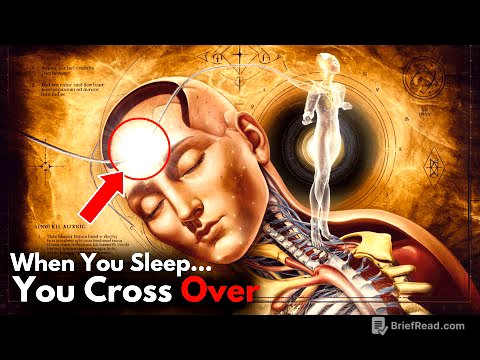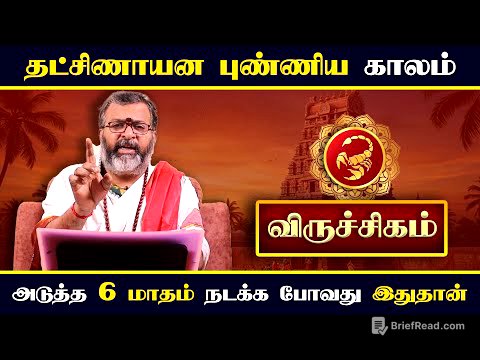TLDR;
This YouTube video by GvKaksha features a free static GK batch taught by G.V. Singh. The course uses mnemonics and maps to help students remember facts easily and retain them for longer. The class aims to solve maximum questions in the class itself, making it useful for SSC and Railway exam aspirants. PDF notes will be available on the G.V. Kaksha app.
- Free static GK batch with mnemonics and maps.
- Useful for SSC and Railway exams.
- PDF notes on G.V. Kaksha app.
Introduction to the Static GK Batch [0:01]
G.V. Singh introduces a free static GK batch, promising a unique approach using mnemonics and map-based techniques not commonly found on YouTube. The aim is to make learning easy and ensure that students can solve most questions directly from the class. The teaching style will be simple and relatable, avoiding complex tricks that are hard to remember. This batch is beneficial for students preparing for SSC and Railway exams. The course will be available live for a limited time on YouTube, with PDF notes provided on the G.V. Kaksha app under the Hanuman Series batch.
Overview of Classical Dances in India [3:43]
The class starts with an overview of classical dances in India, using a map to illustrate the locations of each dance form. There are eight classical dances recognised by the Sangeet Natak Akademi. These include Kathak from Uttar Pradesh, Sattriya from Assam, Manipuri from Manipur, Odissi from Odisha, Kuchipudi from Andhra Pradesh, Bharatnatyam from Tamil Nadu, and Kathakali and Mohiniyattam from Kerala. Additionally, Yakshagana from Karnataka is mentioned. Each dance form is briefly introduced with its respective state.
Mnemonics for Remembering Classical Dances [7:46]
G.V. Singh shares memory tricks to remember the classical dances and their states. For Bharatnatyam, associate it with "Bharat" and remember the phrase "Bharat mein koi natak karta hai toh bolta hai, 'Aa mil, mai tere ko batata hu'," linking Tamil Nadu ("mil"). For Kathakali, remember "Katha mein prasad ke roop mein kele milte hain jo mann ko moh lete hain," connecting Kerala (kele) and Mohiniyattam (moh). For Andhra Pradesh, "Andhe log kacchi puri kha lete hain" helps to remember Kuchipudi. Uttar Pradesh is remembered as "UP ke log mehanti hote hain aur thakte nahi hain," linking to Kathak ("thakte"). Assam is linked to "Riya ke saath aam khayenge," connecting to Sattriya (Assam/Aam).
Bharatnatyam: Key Details and Exponents [11:32]
The lecture moves into the details of Bharatnatyam, covering important artists, awards, and state affiliations. Key artists include Yamini Krishnamurthy (who also performs Kuchipudi), Sonal Mansingh (who also performs Odissi), and Rukmini Devi Arundale. A trick to remember is "Bharat mein devi ki murtiyon par puri chadhai jati hai," linking Rukmini Devi Arundale, Yamini Krishnamurthy, and Kuchipudi. Another trick is "Bharat mein sabhi disha mein 100 nal lage hain," linking Sonal Mansingh (100 nal) and Odissi (disha). Other memory aids include "Bharat mein Ramlila hoti hai aur Bharat ke sabhi logo mein bhai-chara hota hai," linking Leela Samson and Mrinalini Sarabhai, and "Bharat ke log mala ferte hain aur alarm lagakar sote hain," linking Vijayanthimala and Alarmel Valli.
Bharatnatyam Artists and Their Awards [16:27]
The discussion continues with specific Bharatnatyam artists and their awards. Sonal Mansingh from Maharashtra has received Padma Bhushan (1992) and Padma Vibhushan (2003). R. Muthukannammal from Tamil Nadu, a Padma Shri recipient (2022), is the only surviving Devadasi. Alarmel Valli from Tamil Nadu has received Padma Shri (1991), Padma Bhushan (2004), and Sangeet Natak Akademi Award (2001). Yamini Krishnamurthy from Andhra Pradesh has been awarded Padma Shri (1968), Padma Bhushan (2001), Padma Vibhushan (2016), and Sangeet Natak Akademi Award (1977). Rukmini Devi Arundale from Tamil Nadu has received Padma Bhushan (1956), Sangeet Natak Akademi Award (1957), and Kalidas Samman (1984). Padma Subrahmanyam from Tamil Nadu has received Padma Bhushan (2003), Padma Vibhushan (2024), Padma Shri (1981), and Sangeet Natak Akademi Award (1983).
Odissi Dance: Key Exponents and Tricks [21:43]
The focus shifts to Odissi dance, highlighting key exponents and memory tricks. Sonal Mansingh is again mentioned as a performer of both Odissi and Bharatnatyam. A key identifier for Odissi dancers is the surname "Mahapatra." A memory trick is: "Kisi disha mein sanyukt kiran Madhav ke charan par padte hi Indra shor se behra ho jata hai aur vinti karta hai mujhe kumkum lagakar gora kar do," linking Sanjukta Panigrahi, Kiran Segal, Madhavi Mudgal, Kali Charan Patnaik, Indrani Rehman, Sharon Lowen, Hare Krishna Behera, Kumkum Mohanty and Pratibha Gori.
Odissi Artists and Their Awards [23:55]
The lecture details Odissi artists and their awards. Madhavi Mudgal from Odisha has received Padma Shri (1990), Sangeet Natak Akademi Award (2000), and Sanskriti Award (1984). Kelu Charan Mahapatra from Odisha has been awarded Padma Shri (1974), Padma Vibhushan (2000), Padma Bhushan (1988), and Sangeet Natak Akademi Award (1991). Ranjana Gauhar has received Padma Shri (2003) and Sangeet Natak Akademi Award (2007). Kumkum Mohanty has been awarded Padma Shri (2005), Sangeet Natak Akademi Award (1994), Odisha Sangeet Natak Akademi Award (1993), and Guru Kelu Charan Mohapatra Award (2011).
Kathak Dance: Key Details and Exponents [25:25]
The class transitions to Kathak dance, noting that a key identifier is the title "Maharaj." Important figures include Birju Maharaj, Lachhu Maharaj, and Sitara Devi. A memory trick is: "Gopi aur Sarkar jab thak jate hain toh nagar mein sthan khojte hain," linking Gopi Krishna, Malavika Sarkar, Kamalini Asthana, and Nalini Asthana.
Kathak Artists and Their Awards [26:49]
The lecture covers Kathak artists and their awards. Birju Maharaj has received Padma Vibhushan, Sangeet Natak Akademi Award, Kalidas Samman, and Lata Mangeshkar Award. Sitara Devi has been awarded Padma Shri (1973) and Sangeet Natak Akademi Award (1969). Uma Sharma from Rajasthan has received Padma Shri (1973) and Padma Bhushan (2001). Rohini Bhate from Bihar has received Sangeet Natak Akademi Award, Kalidas Samman, Sangeet Natak Akademi Fellowship, Maharashtra Gaurav Puraskar, and Maharashtra Rajya Puraskar. Aditi Mangaldas has received Priyadarshini Award, National Sangeet Akademi Award, Gujarat Sangeet Natak Akademi Award, Mahira Award, and Sanjukta Prangrahi Award. Kumudini Lakhia has been awarded Padma Shri (1987), Padma Bhushan (2010), Sangeet Natak Akademi Award (1982), and Kalidas Samman (2002-2003).
Kathakali Dance: Key Details and Exponents [29:12]
The class discusses Kathakali dance, providing a memory trick: "Shantaro ke ghar mein jab Krishna, Narayan aur Shankar ji ki katha hoti hai toh sare bhaiyon ko anand aata hai," linking Shantaro, KK Krishna Nayar, Vallathol Narayana Menon, Uday Shankar, Mrinalini Sarabhai and Anand Shivram.
Kathakali Artists and Their Awards [31:00]
The lecture highlights Kathakali artists and their awards. Mrinalini Sarabhai has received Padma Shri (1965), Padma Bhushan (1992), Sangeet Natak Akademi Award (1994), and Kerala Sangeet Natak Academy Award (1988).
Kuchipudi Dance: Key Details and Exponents [31:17]
The focus shifts to Kuchipudi dance, noting that a key identifier is the surname "Reddy." A memory trick is: "Jo satya bolega usko puri milegi. Shastron mein likha hai ki puri Lakshmi Narayan ki murti ko shobha nahi deti," linking Vedantam Satyanarayana, Vempati Chinna Satyam, Lakshmi Narayan Shastri, Yamini Krishnamurthy and Shobha Naidu.
Kuchipudi Artists and Their Awards [33:56]
The lecture details Kuchipudi artists and their awards. Shobha Naidu from Andhra Pradesh has received Padma Shri (2001) and Hamsa Award. Vedantam Satyanarayana Sharma has been awarded Padma Shri (1970), Sangeet Natak Akademi Award (1961), and Kalidas Samman (1988). Vempati Chinna Satyam has received Padma Bhushan (1998) and Sangeet Natak Akademi Award (1967). Swapna Sundari from Tamil Nadu has received Padma Bhushan and Sangeet Natak Akademi Award.
Manipuri Dance: Key Details and Exponents [34:57]
The class discusses Manipuri dance, noting key identifiers such as "Jhaveri Sisters," "Singh," and "Mehta."
Mohiniyattam Dance: Key Details and Exponents [35:57]
The focus shifts to Mohiniyattam dance, providing a memory trick: "Amma ne Shivaji ke kaan mein kaha lekin Gopiyon ne sun liya," linking Kalamandalam Kalyani Amma, Bharati Shivaji, Kalamandalam Kshemavathy, Gopika Verma and Sunanda Nair.
Mohiniyattam Artists and Their Awards [37:26]
The lecture highlights Mohiniyattam artists and their awards. Kanak Rele has received Padma Shri (1990) and Padma Bhushan (2013).
Sattriya Dance: Key Details and Exponents [37:34]
The class discusses Sattriya dance, providing a memory trick: "Goswami Shankar aur Indra ki puja lal manko ki mala se karte hain," linking Guru Jatin Goswami, Mr. Shankar Dev, Lalit Ojha and Manik Barbayan.
Practice Questions on Classical Dances [39:07]
The session concludes with practice questions to reinforce learning. The questions cover various aspects of classical dances, including artists, awards, and state affiliations. The mnemonics and key identifiers discussed earlier are applied to answer the questions effectively.

